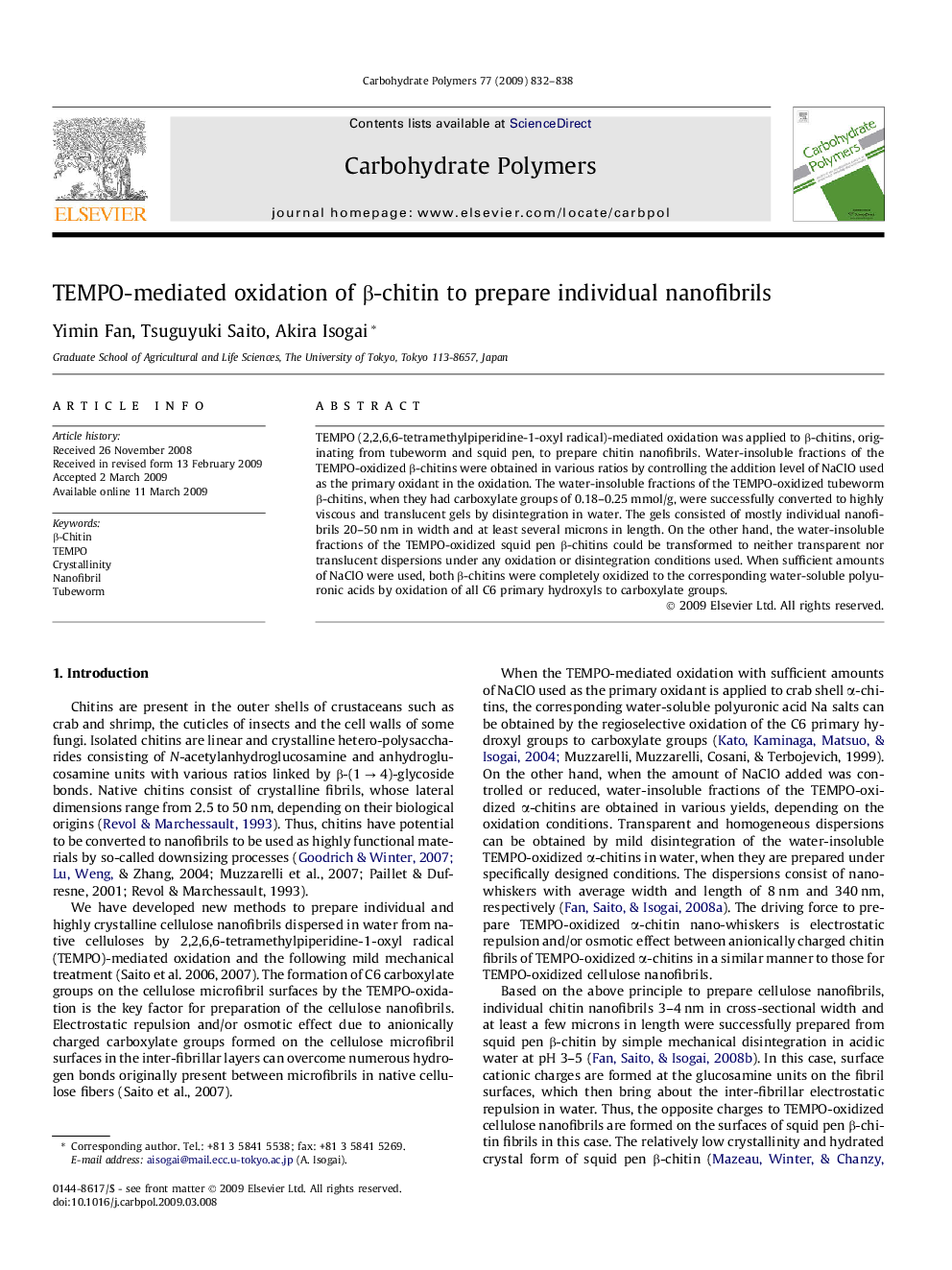| Article ID | Journal | Published Year | Pages | File Type |
|---|---|---|---|---|
| 1386119 | Carbohydrate Polymers | 2009 | 7 Pages |
TEMPO (2,2,6,6-tetramethylpiperidine-1-oxyl radical)-mediated oxidation was applied to β-chitins, originating from tubeworm and squid pen, to prepare chitin nanofibrils. Water-insoluble fractions of the TEMPO-oxidized β-chitins were obtained in various ratios by controlling the addition level of NaClO used as the primary oxidant in the oxidation. The water-insoluble fractions of the TEMPO-oxidized tubeworm β-chitins, when they had carboxylate groups of 0.18–0.25 mmol/g, were successfully converted to highly viscous and translucent gels by disintegration in water. The gels consisted of mostly individual nanofibrils 20–50 nm in width and at least several microns in length. On the other hand, the water-insoluble fractions of the TEMPO-oxidized squid pen β-chitins could be transformed to neither transparent nor translucent dispersions under any oxidation or disintegration conditions used. When sufficient amounts of NaClO were used, both β-chitins were completely oxidized to the corresponding water-soluble polyuronic acids by oxidation of all C6 primary hydroxyls to carboxylate groups.
